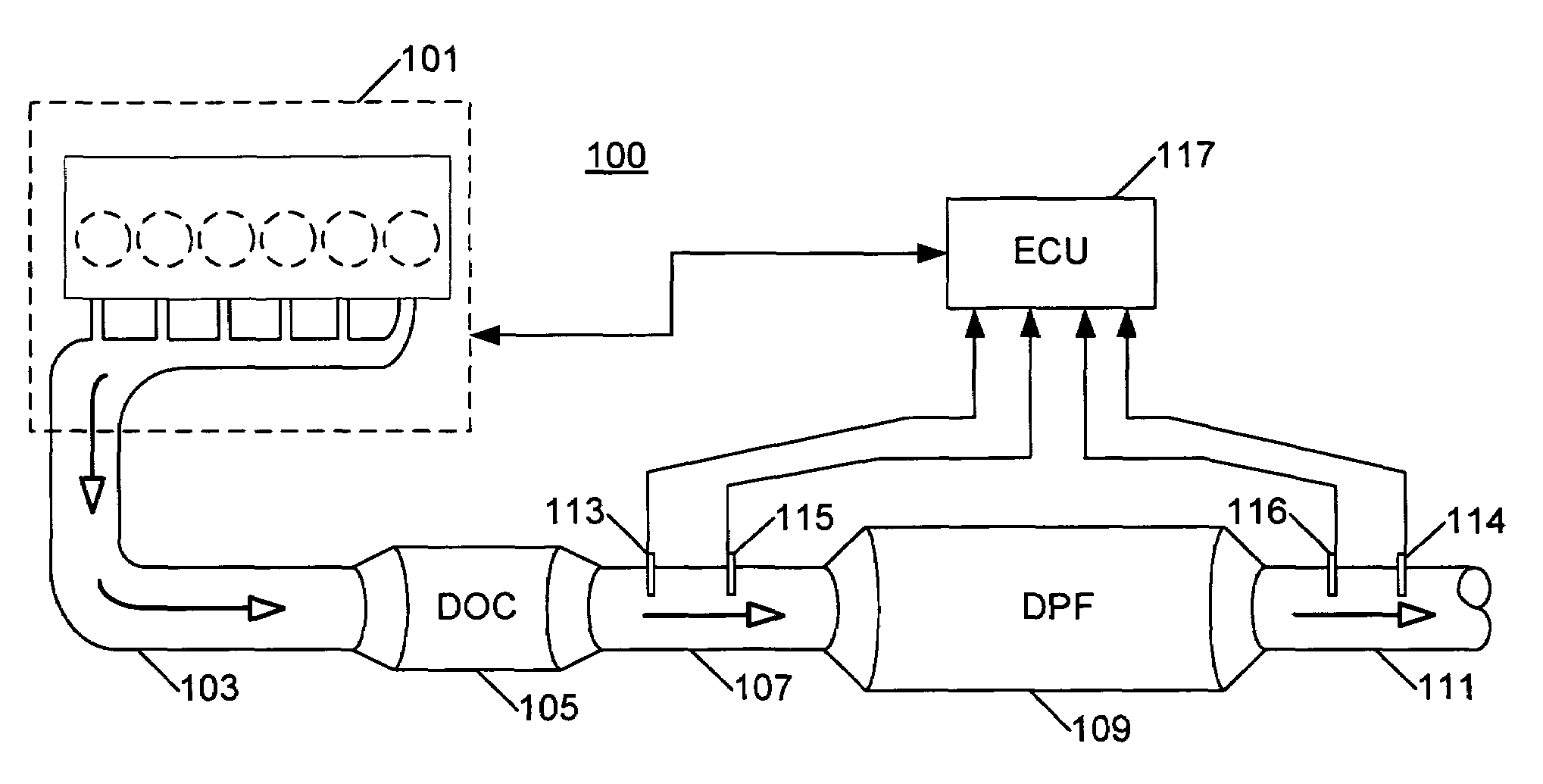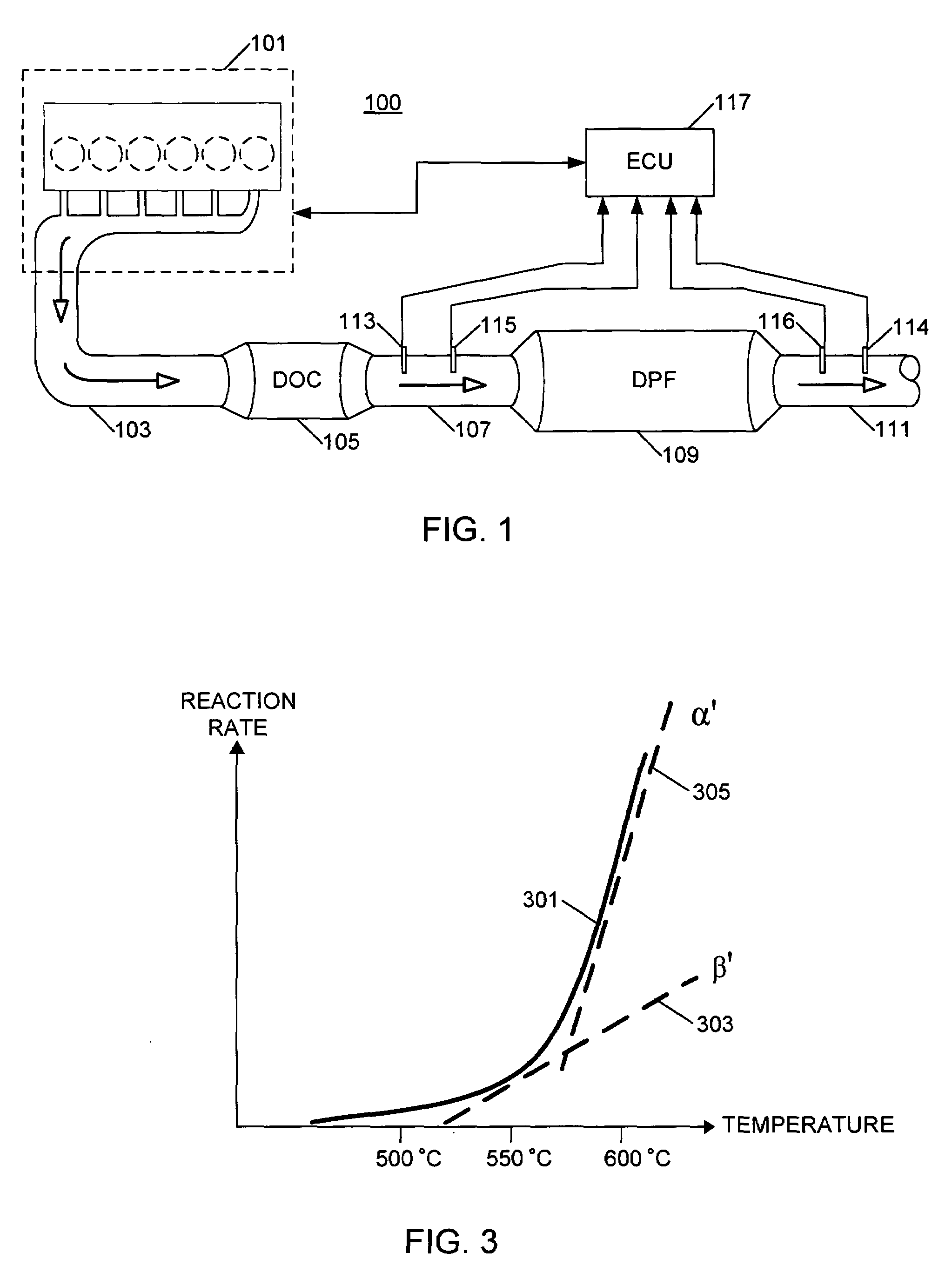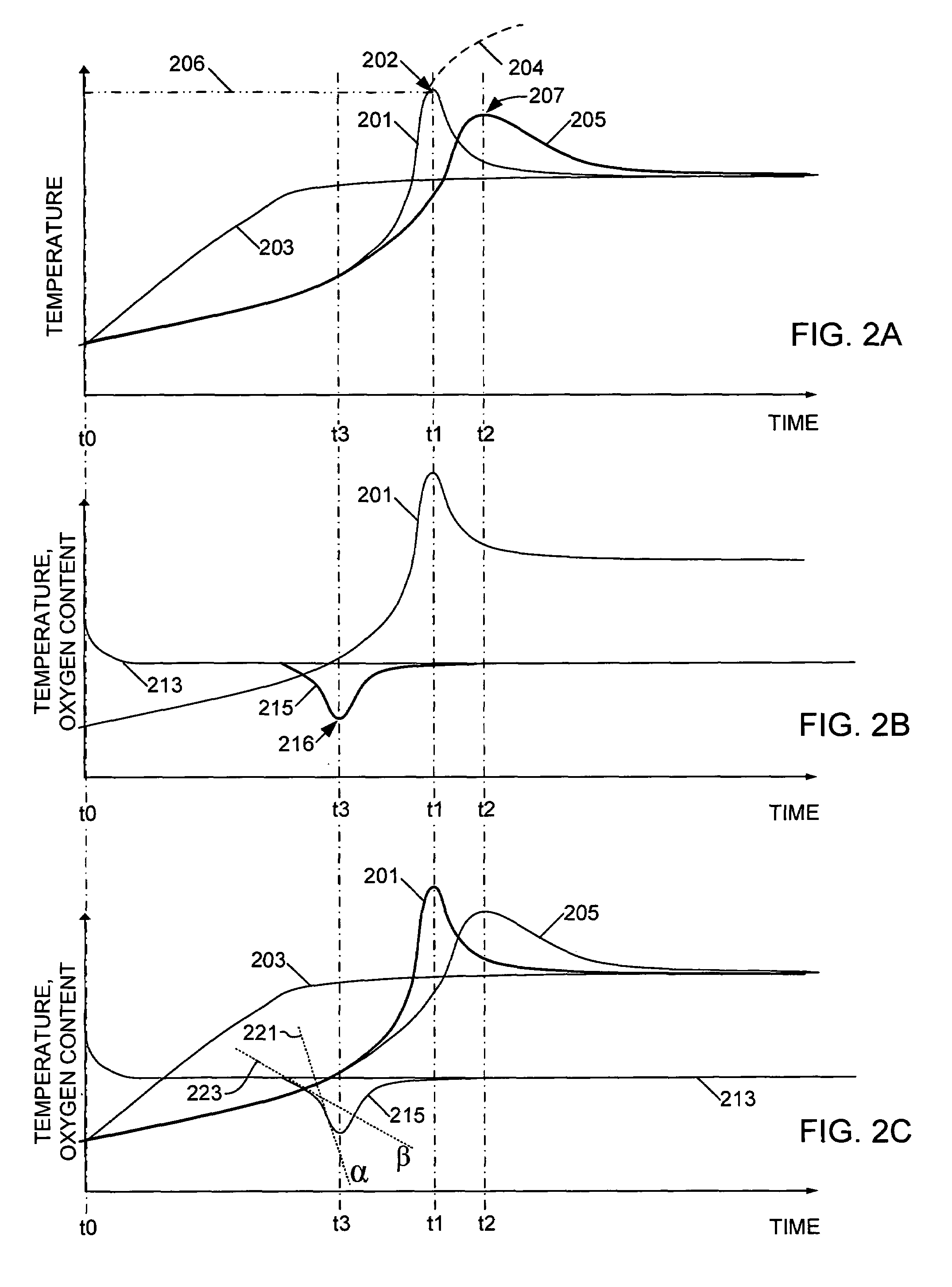DPF regeneration monitoring method
a technology for dpf and regeneration monitoring, which is applied in the direction of machines/engines, electrical control, mechanical equipment, etc., can solve the problems of not being able to avoid potential damage to the dpf, not being able to respond to the dpf sufficiently fast, and having a 5 second delay
- Summary
- Abstract
- Description
- Claims
- Application Information
AI Technical Summary
Benefits of technology
Problems solved by technology
Method used
Image
Examples
Embodiment Construction
[0015]The following describes a method for sensing a condition that requires the premature termination of a regeneration event in a DPF including the use of oxygen sensors. A regeneration event of a DPF is an event during which solid material deposits trapped in the DPF combust to clean the DPF. Solid material trapped in the DPF includes primarily carbon, a byproduct of fuel combustion in the engine, and other materials. Oxygen sensors may be used in the intake and / or exhaust systems of an internal combustion engine to infer the rate of combustion of carbon matter accumulated on a filter element of a DPF. Based on the inferred rate of combustion, an engine ECU may be able to quickly halt the regeneration of the DPF and thus maintain a safe internal temperature in the DPF to avoid potential damage to the filter element.
[0016]An engine system 100 includes a base engine 101. The engine system 100 may include a compression ignition internal combustion or diesel engine. The base engine 1...
PUM
 Login to View More
Login to View More Abstract
Description
Claims
Application Information
 Login to View More
Login to View More - R&D
- Intellectual Property
- Life Sciences
- Materials
- Tech Scout
- Unparalleled Data Quality
- Higher Quality Content
- 60% Fewer Hallucinations
Browse by: Latest US Patents, China's latest patents, Technical Efficacy Thesaurus, Application Domain, Technology Topic, Popular Technical Reports.
© 2025 PatSnap. All rights reserved.Legal|Privacy policy|Modern Slavery Act Transparency Statement|Sitemap|About US| Contact US: help@patsnap.com



